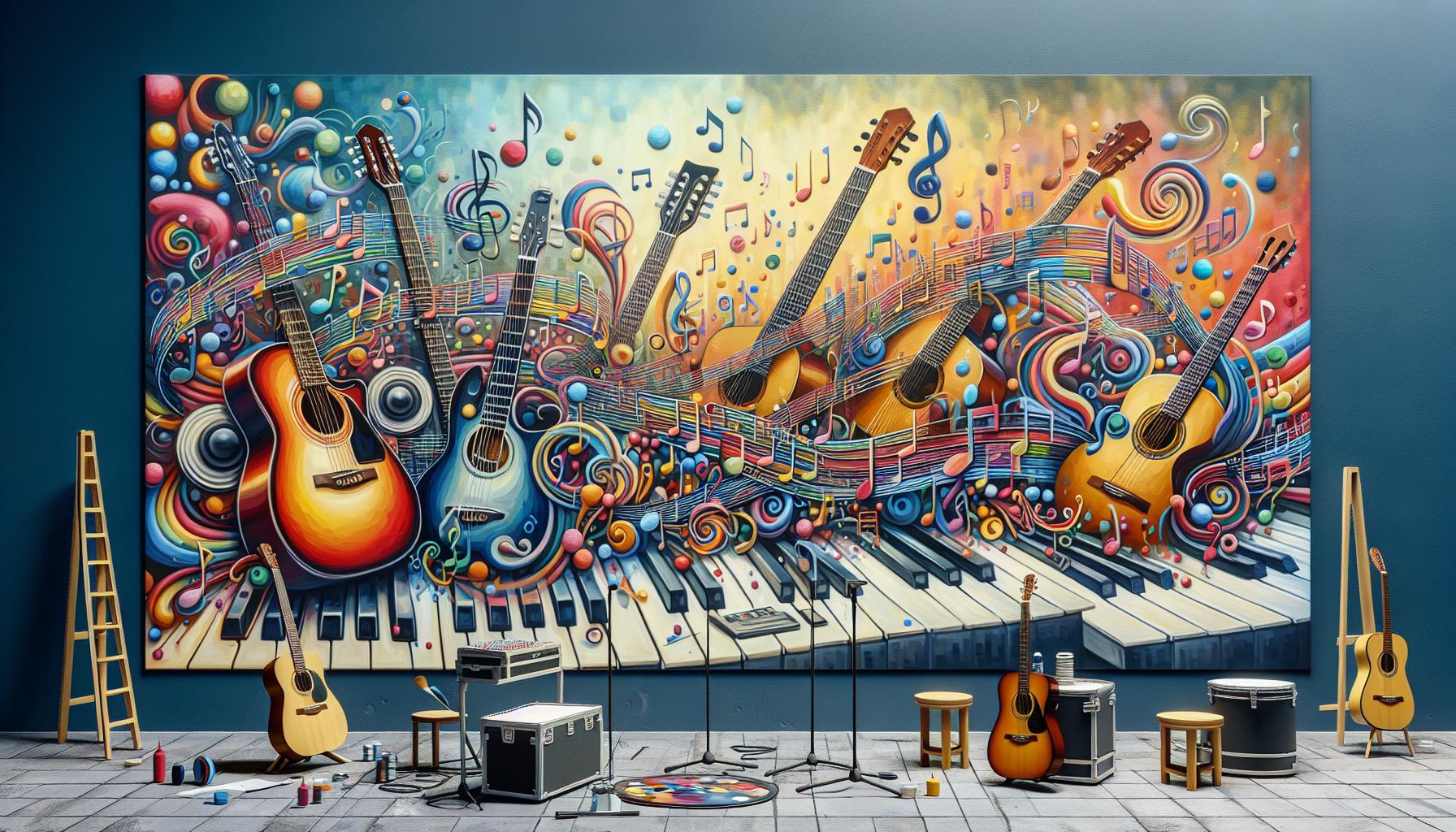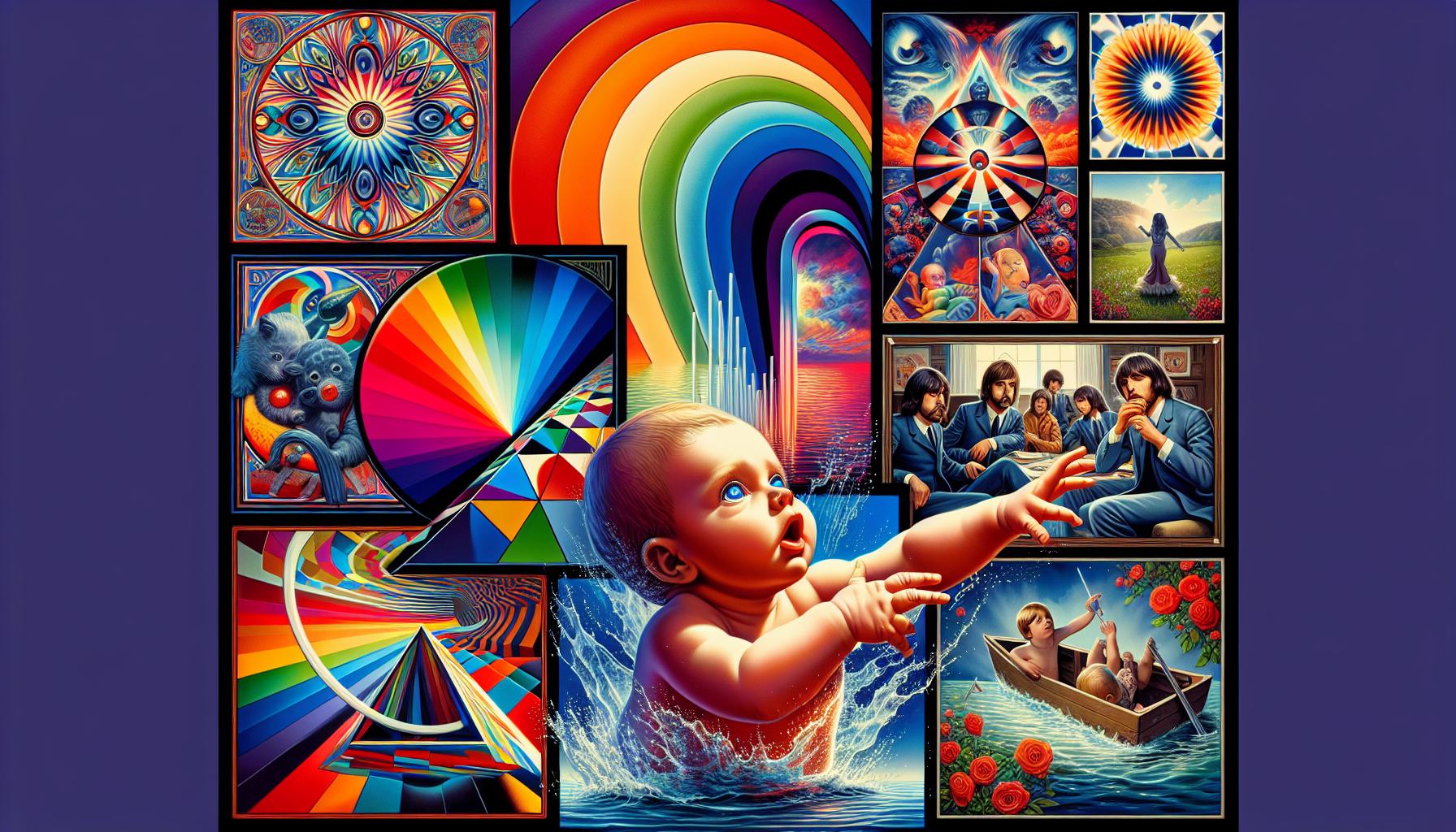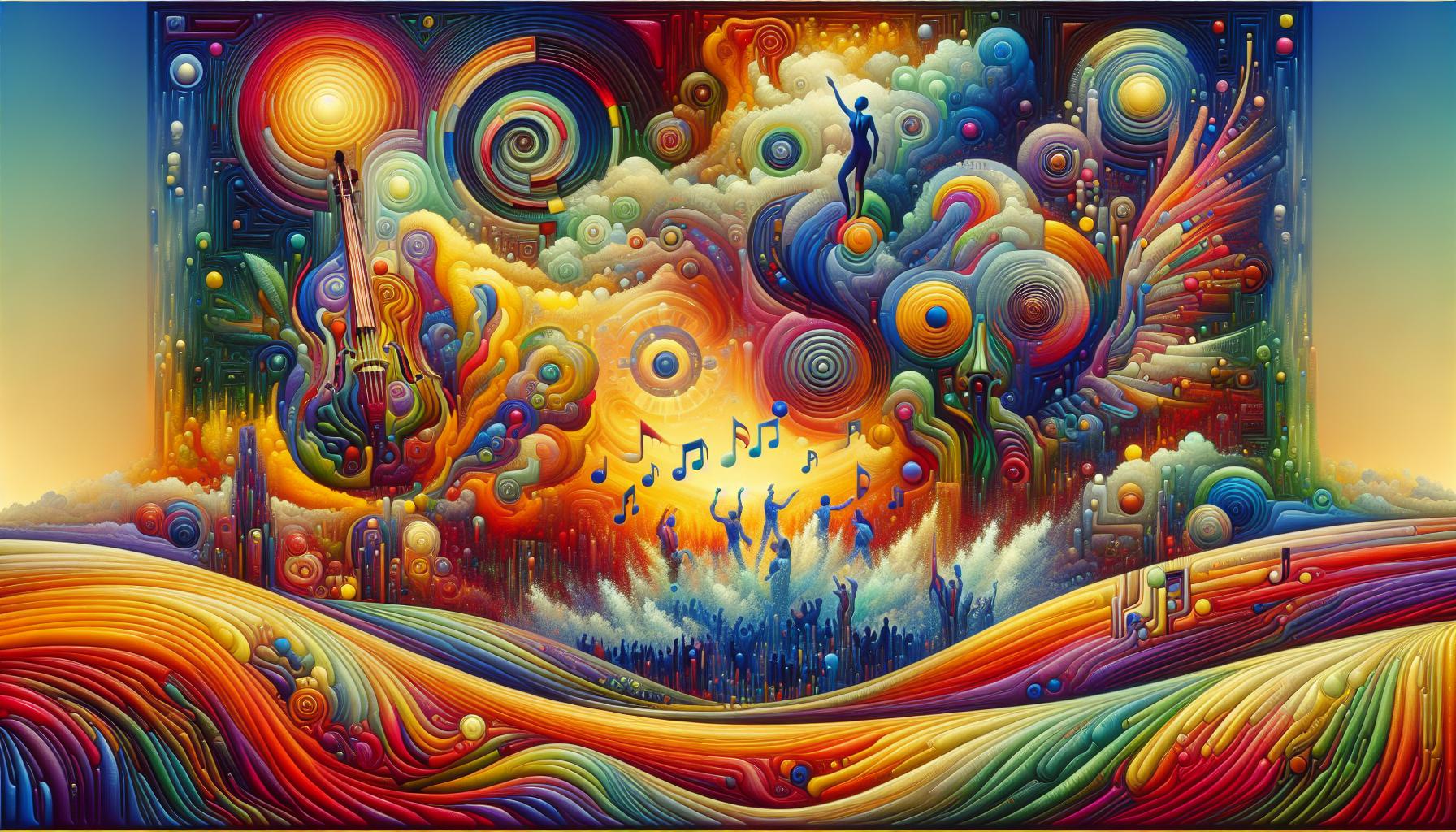Song Art
- Definition and Importance: Song art is the visual representation of music, including album covers and promotional materials that convey the artist’s message and brand identity.
- Historical Evolution: From simple labels in the 1940s to iconic album covers in the 1960s, song art has significantly evolved, shaping marketing strategies in the music industry.
- Elements of Song Art: Key components include lyrics, melody, harmony, and visual representation, all working together to enhance the listener’s emotional experience.
- Cultural Impact: Song art serves as a social commentary reflecting societal issues, enabling deeper connections between artists and audiences.
- Notable Examples: Iconic album covers by artists like The Beatles, Pink Floyd, and Beyoncé showcase the creativity and innovation that define impactful song art.
- Visuals Influence: The imagery enhances the narrative of a song or album, evoking emotions and shaping audience perception, making it a critical aspect of the overall music experience.
In the vibrant world of music, song art stands as a powerful expression of creativity and emotion. It encompasses everything from album covers to promotional graphics, transforming how audiences connect with their favorite tracks. Each piece of song art tells a story, capturing the essence of the music and the artist’s vision in a single image.
As digital platforms continue to shape the music industry, the significance of song art grows. It’s not just about aesthetics; it’s a crucial element in branding and marketing for artists. With the right visuals, song art can elevate a listener’s experience and create lasting impressions. Understanding its impact reveals a deeper appreciation for the artistry behind the sounds we love.
Understanding Song Art
Song art encompasses the visual representation of music, including album covers and promotional materials. This visual element not only serves aesthetic purposes but also plays a crucial role in conveying an artist’s message and brand identity.
Definition of Song Art
Song art refers to the creative visual designs that accompany music. This includes not only album covers but also single artwork, promotional posters, and digital imagery. Song art often reflects the themes, emotions, and messages present in the music. It serves to entice listeners, evoke emotions, and communicate the artist’s vision. Strong song art can differentiate an artist in a competitive market while enhancing the overall listener experience.
Historical Context
Song art has evolved significantly since the emergence of recorded music. In the 1940s, 78 RPM records featured simple labels, but by the 1960s, album art became a focal point of music marketing. Iconic album covers from artists like The Beatles and Pink Floyd revolutionized this art form, showcasing creativity and artistic expression. The rise of digital music in the 2000s shifted how song art is consumed, but its importance remains. Contemporary artists leverage visual platforms like social media to engage audiences, ensuring song art continues to play a vital role in the music industry.
The Elements of Song Art

Song art encompasses various elements that contribute to a music piece’s overall impact. These elements include lyrics, melody, harmony, and visual representation, each serving a distinct role in conveying the artist’s vision.
Lyrics as Artistic Expression
Lyrics serve as a fundamental component of song art, giving voice to the artist’s emotions and ideas. They craft narratives and evoke feelings, allowing listeners to connect on a personal level. Lyricists often use literary devices, such as imagery and metaphor, to present complex themes and stories. By reflecting societal issues or personal experiences, lyrics can engage audiences and foster deeper connections with the music.
Melodic and Harmonic Aspects
Melodic and harmonic elements complement lyrics, shaping the overall sonic experience. Melody creates the song’s main theme, capturing attention and providing memorability. Simple, catchy melodies often resonate with listeners, making them easier to recall. Harmony enriches the melodic line by adding depth and texture, guiding emotional responses. Together, these components enhance the song’s impact, forging a richer experience that resonates with audiences emotionally and intellectually.
Notable Examples of Song Art

Song art encompasses diverse examples that have profoundly impacted the music industry, showcasing creativity and innovation.
Iconic Songs that Redefine Art
- The Beatles – “Sgt. Pepper’s Lonely Hearts Club Band”
The 1967 album cover features vibrant colors and a collage of famous figures, marking a pivotal moment in visual artistry.
- Pink Floyd – “The Dark Side of the Moon”
The iconic prism design represents the band’s themes of complexity and duality, becoming one of the most recognizable images in music history.
- Nirvana – “Nevermind”
The image of a baby swimming towards a dollar bill symbolizes innocence and commercialization, resonating strongly with the grunge movement.
- David Bowie – “Aladdin Sane”
The striking makeup and bold colors on the cover reflect Bowie’s alter ego and artistic evolution, impacting pop culture significantly.
- Beyoncé – “Lemonade”
The visual album integrates powerful imagery and symbolism, reflecting themes of empowerment and resilience, while bridging music and film.
- Billie Eilish
Eilish uses unique visual aesthetics, often characterized by dark and surreal elements, creating a distinct brand identity that aligns with her music.
- Hozier
His album covers and promotional materials frequently include lyrical themes and vivid imagery, effectively connecting with his audience’s emotional experiences.
- Phoebe Bridgers
Bridgers’ art incorporates minimalist designs that underscore her introspective songwriting style, attracting listeners with sincere visuals that complement her music.
- Lil Nas X
He pushes boundaries through bold and provocative visuals, merging genre-defying music with striking art that challenges conventional norms in the industry.
- Tame Impala
Kevin Parker integrates psychedelic visuals in his artwork, reinforcing the immersive experience of his music and creating a strong visual identity.
The Impact of Song Art on Culture

Song art significantly influences cultural dynamics, often serving as a mirror reflecting societal issues, values, and shifts. It enriches the music experience and fosters a deeper understanding of the messages conveyed through music.
Social Commentary Through Music
Song art often acts as a vehicle for social commentary, tackling themes like politics, identity, and culture. Artists utilize visuals to provoke thought and spark discussions about pressing issues, enabling audiences to connect with the music on a profound level. For instance, the striking imagery in Kendrick Lamar’s album “To Pimp a Butterfly” addresses systemic racism and personal struggle, encouraging listeners to confront uncomfortable truths. Similarly, the provocative design of Childish Gambino’s “This Is America” combines visual and lyrical elements, challenging societal perceptions of violence and equality. The integration of social themes in song art amplifies awareness and stimulates cultural dialogue.
The Role of Visuals in Song Art
Visuals play a crucial role in defining the identity of a song or album, often enhancing its overall narrative. Imagery can evoke emotions, create intrigue, or capture the essence of the music. For example, the surreal cover art of Pink Floyd’s “The Dark Side of the Moon” complements the album’s exploration of mental health, while the minimalist approach of Billie Eilish’s “When We All Fall Asleep, Where Do We Go?” aligns with its introspective themes. Each visual element, including color, typography, and composition, shapes the audience’s perception and fosters a connection with the music. Effective song art transcends mere aesthetics, becoming an integral part of the artistic expression that resonates with both fans and critics alike.
Future of Music
Song art stands as a vital component of the music industry that transcends mere visuals. It captures the essence of an artist’s vision while enhancing the listener’s experience. As the landscape of music continues to evolve, the role of song art in branding and marketing is more crucial than ever.
The creativity behind album covers and promotional graphics not only tells a story but also evokes emotions that resonate with audiences. By reflecting societal issues and artistic themes, song art serves as a powerful vehicle for connection and expression. As artists push boundaries and explore new visual territories, song art will undoubtedly remain a key player in shaping the future of music.


